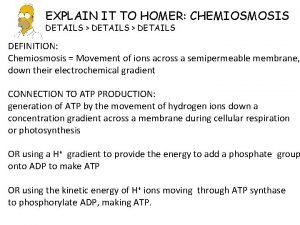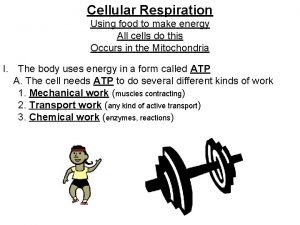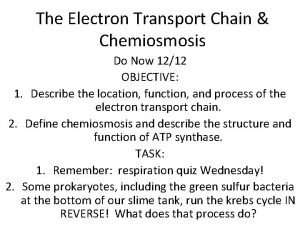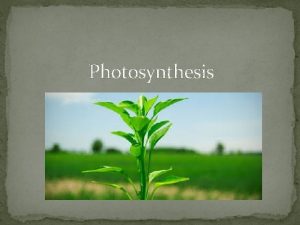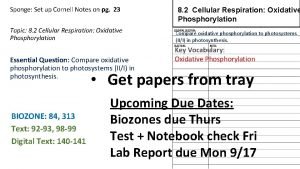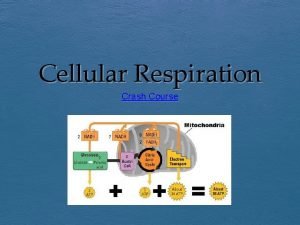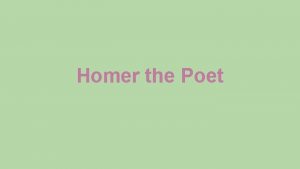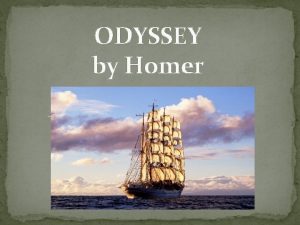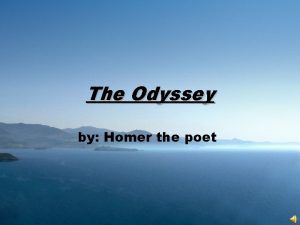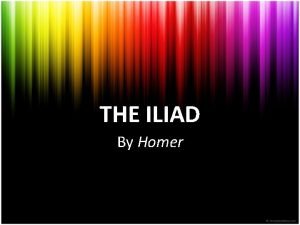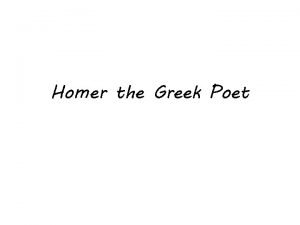EXPLAIN IT TO HOMER CHEMIOSMOSIS DETAILS DETAILS DEFINITION






- Slides: 6

EXPLAIN IT TO HOMER: CHEMIOSMOSIS DETAILS > DETAILS DEFINITION: Chemiosmosis = Movement of ions across a semipermeable membrane, down their electrochemical gradient CONNECTION TO ATP PRODUCTION: generation of ATP by the movement of hydrogen ions down a concentration gradient across a membrane during cellular respiration or photosynthesis OR using a H+ gradient to provide the energy to add a phosphate group onto ADP to make ATP OR using the kinetic energy of H+ ions moving through ATP synthase to phosphorylate ADP, making ATP.

EXPLAIN IT TO HOMER: DETAILS > DETAILS Chemiosmosis: WHERE FOUND ~ occurs in chloroplasts (photosynthesis) and mitochondria (Cellular respiration) ~ in some bacteria and archaea WHERE ELECTRONS COME FROM? ~ Electrons are provided by high energy electron carriers (NADH or FADH 2) in mitochondria OR Photosystem II (replaced by splitting H 2 O) in chloroplasts

LOCATION OF ETC? ~ electrons pass through a series of redox reactions along integral membrane proteins ~ electron transport proteins located in thylakoid membranes in chloroplasts OR cristae in mitochondria OR bacterial plasma membrane

H+ ion GRADIENT CREATED BY ETC ~ movement of electrons along ETC provides energy to pump H+ ions across membrane ~ ETC proteins = proton pumps actively move H+ ions low → high ~ matrix → intermembrane space in mitochondria OR stroma → thylakoid space in chloroplasts OR intracellular → extracellular in bacteria ~ H+ ions build up in intermembrane space OR thylakoid space OR outside bacterial cell ~ H+ ion gradient/proton gradient/ electrochemical gradient created = potential energy

H+ IONS ? ~ H+ ions want to move back across membrane (High → low) ~ ions can’t pass through hydrophobic tails in membrane without help of ion channel

ATP SYNTHASE ~ ATP synthase provides ion channel for H+ to pass through ~ H+ pass down gradient through ATP Synthase ~ flow of protons back through ATP synthase provides energy to phosphorylate ADP LAST ELECTRON ACCEPTOR ~ last electron acceptor at end of ETC is NADP+ to make NADPH (photosynthesis) OR O 2 to make H 2 O (cellular respiration)
